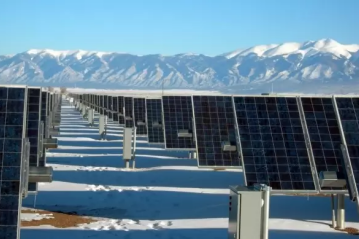
The rapid growth of solar energy systems has made inverter placement a crucial aspect of their design and installation. Inverters play a vital role in converting direct current (DC) generated by solar panels into alternating current (AC) for use in homes and businesses. However, the location of the inverter can significantly impact the efficiency and performance of the entire system. In this blog post, we will explore the factors to consider when determining the ideal placement for inverters, recommended options for placement, and best practices to ensure optimal performance and longevity.
Factors to Consider When Locating an Inverter
1. Proximity to Solar Panels
One crucial factor to consider when locating an inverter is its proximity to the solar panels. Minimizing energy loss due to long DC cable runs is essential for maximizing system efficiency. The longer the distance between the panels and the inverter, the higher the risk of power loss. It is recommended to keep the distance as short as possible and select a location that allows for efficient power transmission.
2. Environmental Considerations
The environmental conditions surrounding the inverter can have a significant impact on its performance and lifespan. Extreme temperatures can reduce efficiency and potentially damage the inverter. Therefore, it is essential to place the inverter in a location that is protected from direct sunlight, excessive heat, and freezing temperatures. Adequate ventilation should also be ensured to prevent overheating, as inverters generate heat during operation.
3. Accessibility and Safety
The accessibility of the inverter is crucial for maintenance, repairs, and safety purposes. Compliance with electrical codes and regulations is of utmost importance. The inverter should be installed in a location that allows for easy access while ensuring the safety of both the system and individuals. Consideration should be given to factors such as clearance space, proper grounding, and protection against unauthorized access.
Recommended Inverter Placement Options
1. Indoor Installations
For residential and small-scale systems, indoor installations offer several benefits. Indoor locations provide better protection against extreme weather conditions and temperature fluctuations. They also allow for easier monitoring, maintenance, and protection against potential theft or vandalism. The inverter can be installed in utility rooms, basements, garages, or other designated areas within the building, provided that adequate space and ventilation requirements are met.
2. Outdoor Installations
Outdoor installations are common for larger-scale systems and when indoor space is limited. While outdoor installations present challenges such as exposure to weather elements, proper enclosure options can mitigate these risks. Enclosures designed specifically for outdoor use protect the inverter from rain, snow, and direct sunlight. It is essential to select enclosures that meet the necessary safety standards and provide adequate ventilation to prevent overheating.
3. Hybrid Installations
Hybrid installations combine elements of both indoor and outdoor setups, often seen in larger-scale commercial installations. In these setups, the inverter may be located indoors, while other components, such as combiner boxes and disconnect switches, are placed outdoors. Hybrid installations offer a flexible solution that optimizes the performance of the system while ensuring convenience and accessibility for maintenance and repairs.
Best Practices for Inverter Placement
1. Working with Certified Professionals
To ensure proper inverter placement, it is crucial to engage certified professionals with experience in solar installation. Qualified installers possess the expertise to evaluate your specific needs, conduct thorough site assessments, and recommend the most suitable inverter placement for optimal performance and safety. Hiring professionals with appropriate certifications and qualifications guarantees that your system adheres to industry standards and local regulations.
2. Compliance with Manufacturer Recommendations
Every inverter model comes with specific manufacturer guidelines for placement and installation. It is essential to carefully review and adhere to these recommendations to ensure the warranty coverage remains valid and the system operates efficiently. Manufacturers provide instructions on factors such as temperature range, ventilation requirements, and clearances. Following these guidelines guarantees the inverter operates within its intended specifications.
3. Conducting a Site Assessment
Before finalizing the placement of the inverter, conducting a site assessment is crucial. Factors such as shading analysis, available space, electrical infrastructure, and energy production estimations should be evaluated. Site-specific considerations will help determine the optimal location for the inverter, taking into account both efficiency and practicality.
Conclusion
The placement of inverters in solar energy systems significantly influences their efficiency, performance, and longevity. By considering factors such as proximity to solar panels, environmental conditions, accessibility, and safety, you can make informed decisions for the optimal placement of inverters. Whether you choose indoor, outdoor, or hybrid installations, working with certified professionals and complying with manufacturer recommendations ensures the long-term success of your solar energy system. By following these best practices, you can maximize energy production and enjoy the numerous benefits of a well-placed and efficiently operating inverter.
ECGSOLAX offers high quality 48v solar inverter. If you are interested in our products, please contact us and learn more!

0 comments